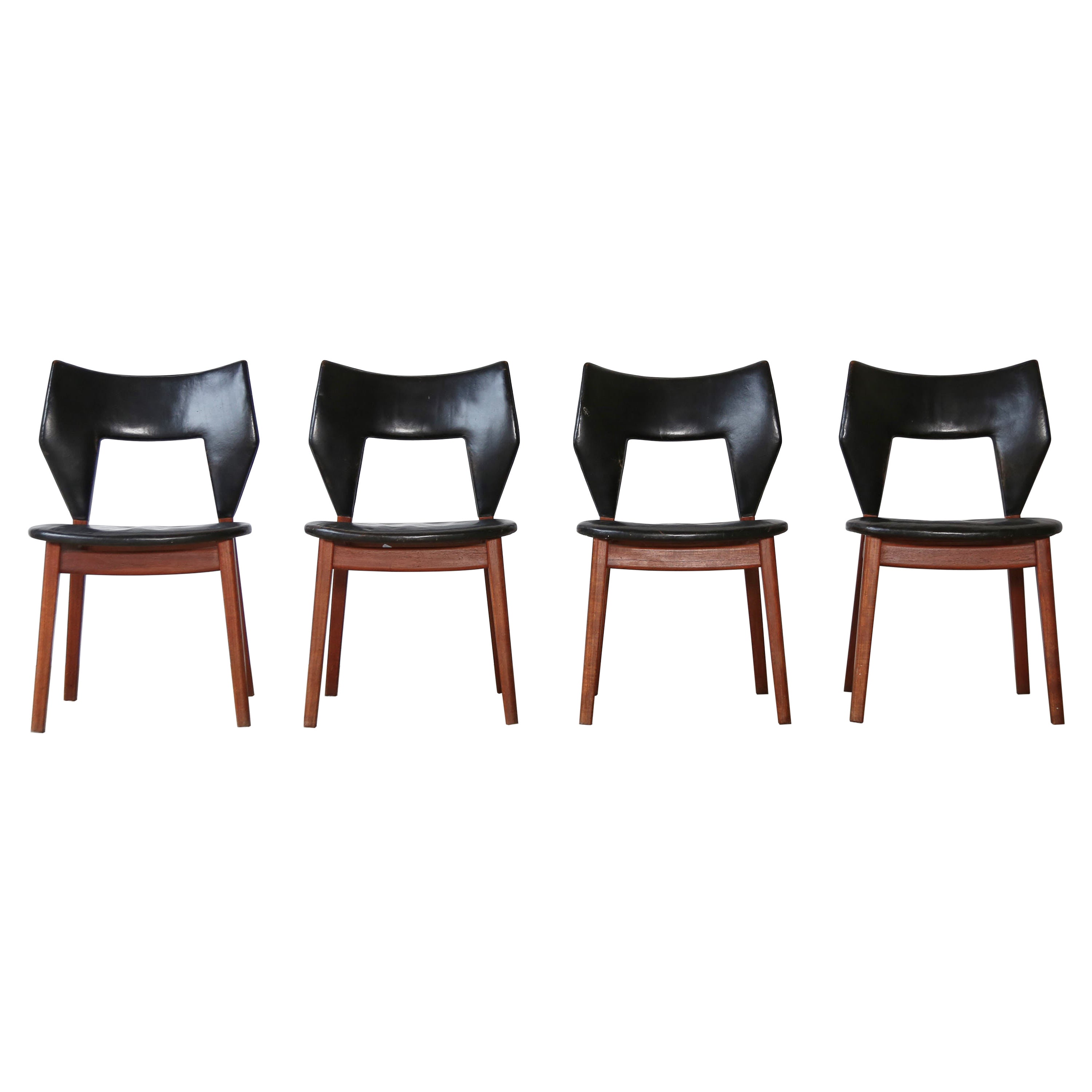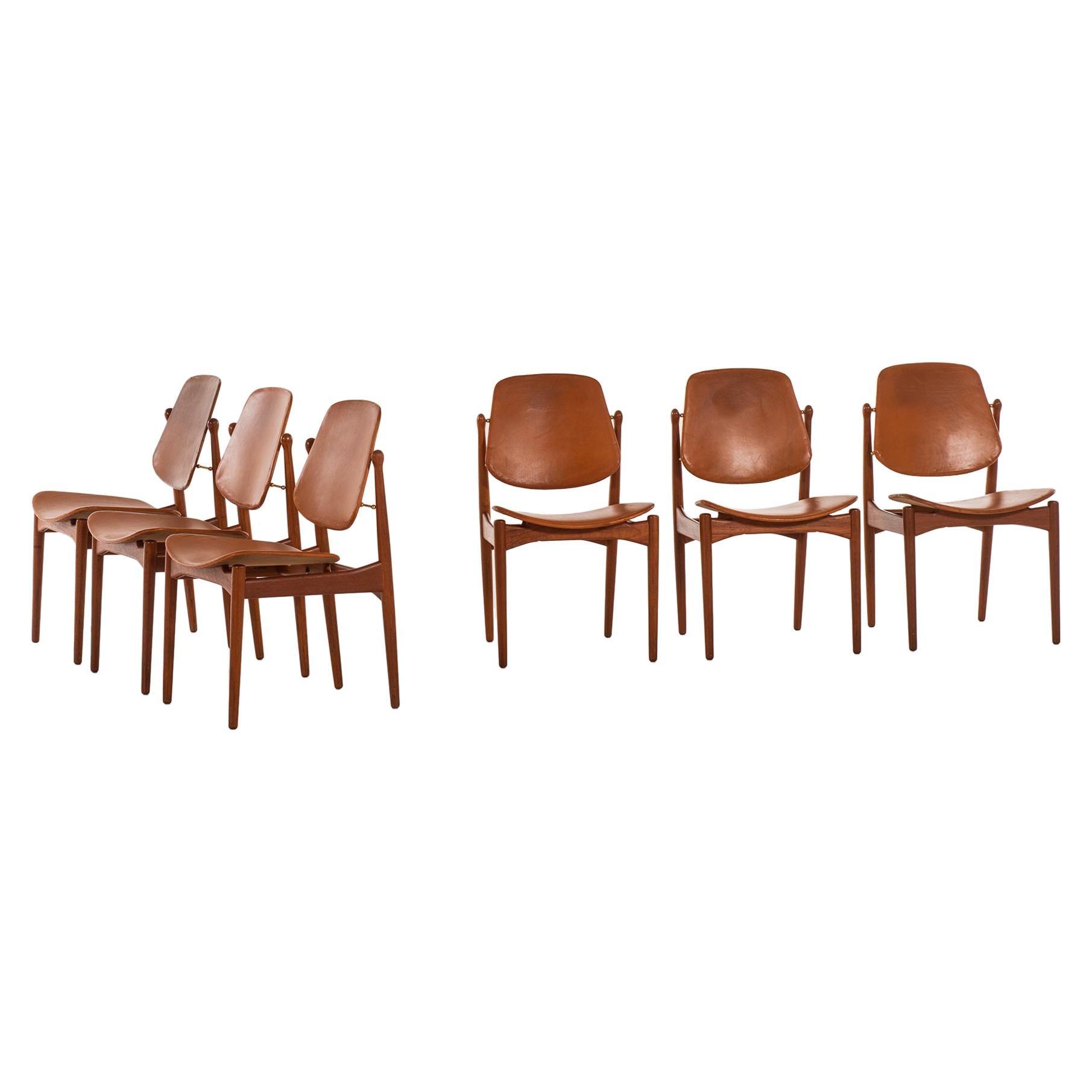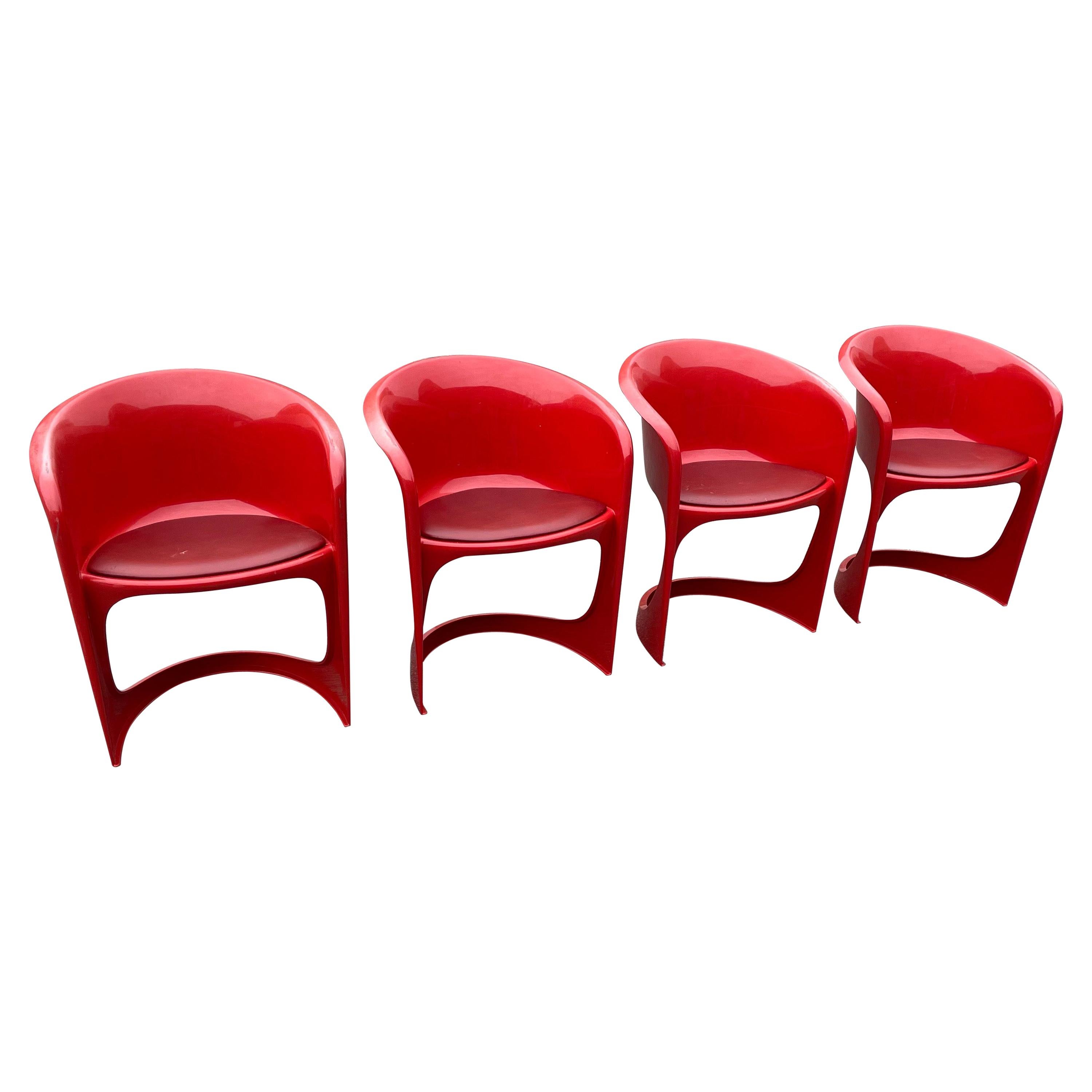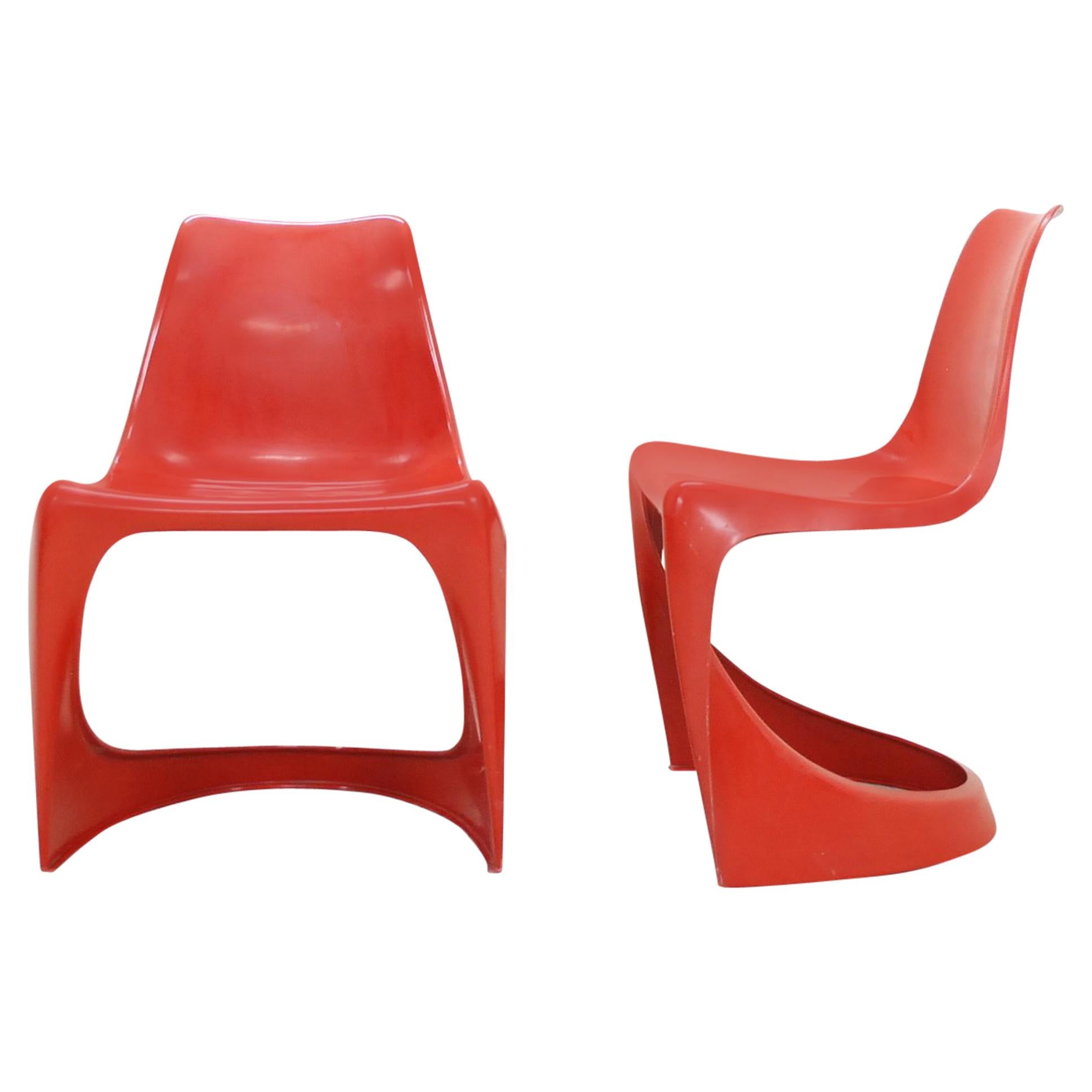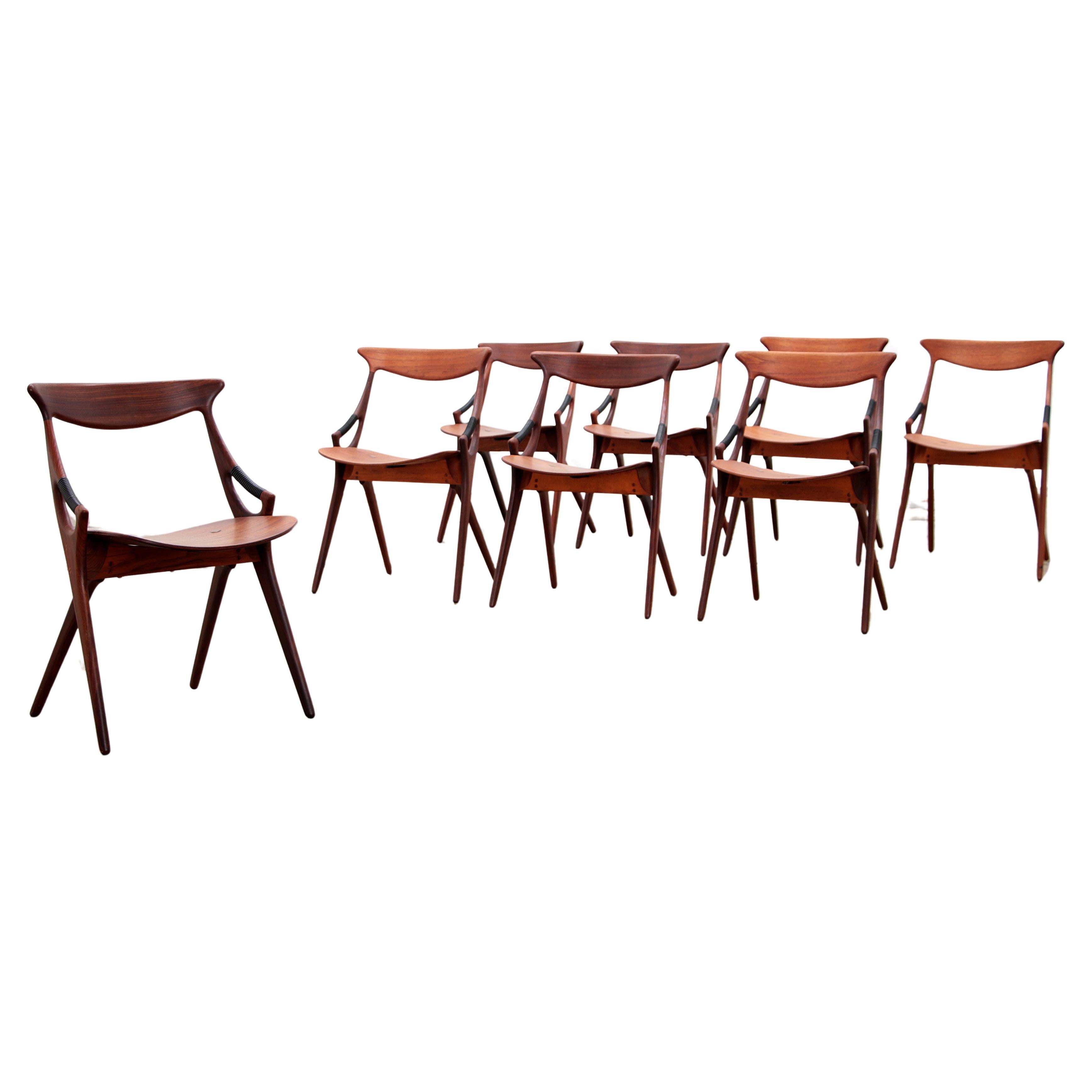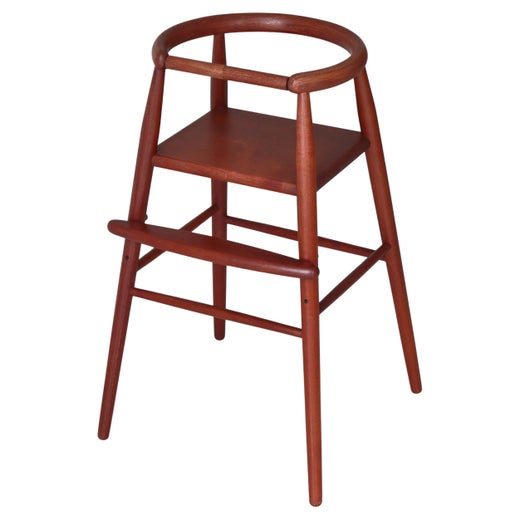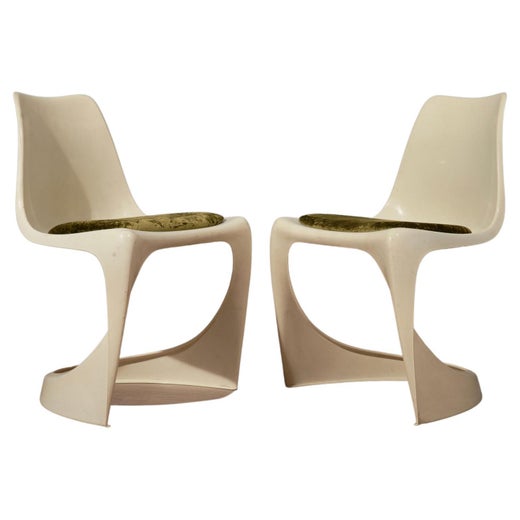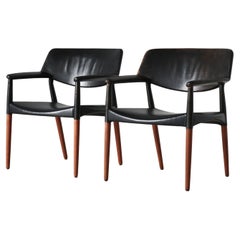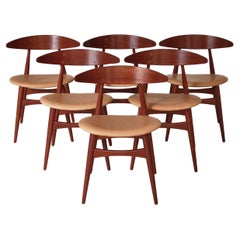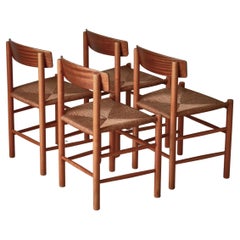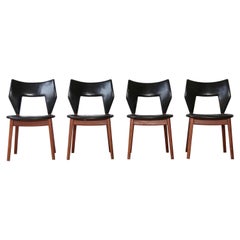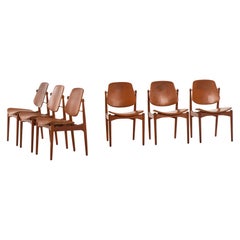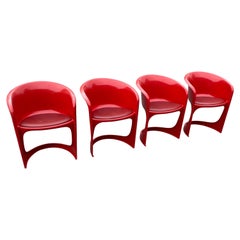Steen Østergaard Cantilever "290" by CADO, Dining Chairs, Danish Modern, 1970
About the Item
- Creator:
- Dimensions:Height: 31.11 in (79 cm)Width: 20.48 in (52 cm)Depth: 20.48 in (52 cm)Seat Height: 17.72 in (45 cm)
- Sold As:Set of 5
- Style:Scandinavian Modern (Of the Period)
- Materials and Techniques:
- Place of Origin:
- Period:
- Date of Manufacture:1970
- Condition:Wear consistent with age and use. Good original condition. Very few superficial stains on one of the original cushions. Few tiny scratches to chairs.
- Seller Location:Odense, DK
- Reference Number:1stDibs: LU3793135550462
Nanna Ditzel
Nanna Ditzel was the most versatile and creative female designer that Denmark produced in the 20th century. Ditzel brought her talents to bear on a staggering array of forms — she designed furniture, jewelry, tableware and textiles; and she shaped her pieces using an equally astonishing variety of materials, from wood and wicker to silver, ceramics and fiberglass.
Born in Copenhagen, she trained as a cabinetmaker at the Royal Academy's furniture school — overseen by the great craftsman of the day, Kaare Klint — and graduated in 1943. Ditzel’s early work adhered to the classic Danish modernist tenets of simplicity, comfort and quality, and her armchairs, with their softly curved backrests are much in the spirit of Hans Wegner. Ditzel’s signature piece of that time is her Ring chair. Designed along with her husband, Jørgen Ditzel, a fabric maker, the chair has a semicircular padded armrest that seems to embrace the sitter. Ditzel began designing in wicker and in 1959 produced the Hanging chair. The piece, suspended from the ceiling by a chain, became a favorite for fashion shoots and may be as iconic of the 1960s as Eero Aarnio’s plastic Ball chair of 1963.
In 1956, Ditzel began designing for the Danish silverware firm Georg Jensen. In an association that lasted some 40 years, Ditzel would create organically shaped jewelry, barware, ceramic tableware and even tablecloths. Like her fellow Dane Verner Panton, Ditzel was not afraid to embrace industrial materials, and she began designing fiberglass chairs in the mid-1960s. Some of her most flamboyant work came toward the end of her career, in pieces such as 1989’s Bench for Two, with its shocking Op-art finish, or the Trinidad chair of 1992, with it’s sunburst-like, cut-though backs. Such feats of creativity were a fitting coda to one of the most imaginative, prolific and remarkable women of modern design.
Steen Ostergaard
Danish architect and industrial designer Steen Østergaard was decades ahead of his time with his futuristic Space Age designs. Through his innovative chairs, tables and other furniture, Østergaard elevated Scandinavian modern design during the mid-20th century.
Born in 1935, Østergaard studied furniture design and architecture at the School of Arts and Crafts in Copenhagen in 1957, graduating with honors in 1960. That same year, he won first prize in furniture design at the Danish Upholstery Guild’s annual awards, presented at Copenhagen’s Designmuseum Danmark.
From 1962 to 1965, Østergaard worked in the studio of revered furniture designer and architect Finn Juhl before establishing his own firm. Østergaard’s watershed moment came in 1968 when he created the iconic Cado 290 chair. Later produced in 1970 by Danish designer Poul Cadovius’s Cado company, the chair — a brilliant one-piece work of polyamide nylon reinforced with fiberglass by way of injection-molding — features an elegant form inspired by the stackable seats created by Danish designer Verner Panton, who started experimenting with the concept of single-piece plastic chairs in the late 1950s. However, unlike the revolutionary Panton chair, Østergaard’s design includes optional cushions that can be affixed directly onto the chair’s frame.
Another of Østergaard’s exemplary seating pieces is the President Meteor lounge chair designed in 1968 as part of Cado’s A-Line collection. The indoor and outdoor chair was originally produced in six colors — beige, brown, green, white, red and blue — and incorporates a molded plastic frame with a deep, upholstered seat. The lounge chair appeared in the original Star Trek television series and film Star Trek II: The Wrath of Khan and was used at NASA’s Johnson Space Center in Houston, Texas.
Østergaard is also known for furnishings such as his molded plastic dining room chairs, patio and garden furniture and ergonomic club chairs. In 1981, he designed and constructed the first Action Recliner chair, which included a built-in footrest, a piece now replicated around the world.
Østergaard’s furniture has been featured in exhibitions throughout Europe and the United States, including at the Museum of Modern Art in New York, the Deutsches Museum in Munich and Designmuseum Danmark.
On 1stDibs, discover a range of vintage Steen Østergaard chairs and other furniture.
- ShippingRetrieving quote...Shipping from: Ullerslev, Denmark
- Return Policy
More From This Seller
View AllVintage 1950s Danish Scandinavian Modern Dining Room Chairs
Cane, Oak
Vintage 1940s Danish Scandinavian Modern Armchairs
Leather, Teak
Vintage 1950s Danish Scandinavian Modern Dining Room Chairs
Leather, Teak
Vintage 1940s Danish Scandinavian Modern Dining Room Chairs
Papercord, Beech, Mahogany
Vintage 1950s Danish Scandinavian Modern Lounge Chairs
Wool, Oak
Vintage 1950s Danish Scandinavian Modern Lounge Chairs
Beech
You May Also Like
Mid-20th Century Danish Scandinavian Modern Dining Room Chairs
Wood, Leather
Vintage 1950s Danish Scandinavian Modern Dining Room Chairs
Brass
Vintage 1960s Danish Mid-Century Modern Chairs
Plastic
Vintage 1960s Danish Scandinavian Modern Dining Room Chairs
Faux Leather, Teak
Vintage 1960s Danish Scandinavian Modern Chairs
Plastic
Vintage 1960s Danish Mid-Century Modern Dining Room Chairs
Wood
